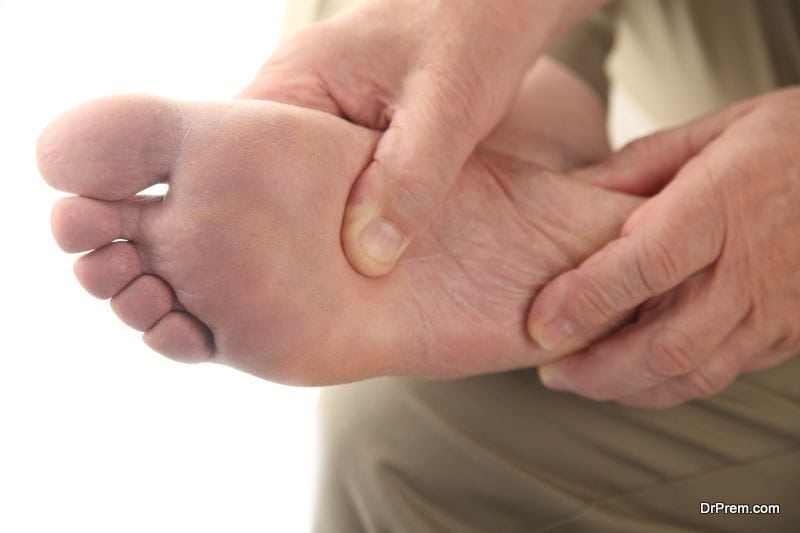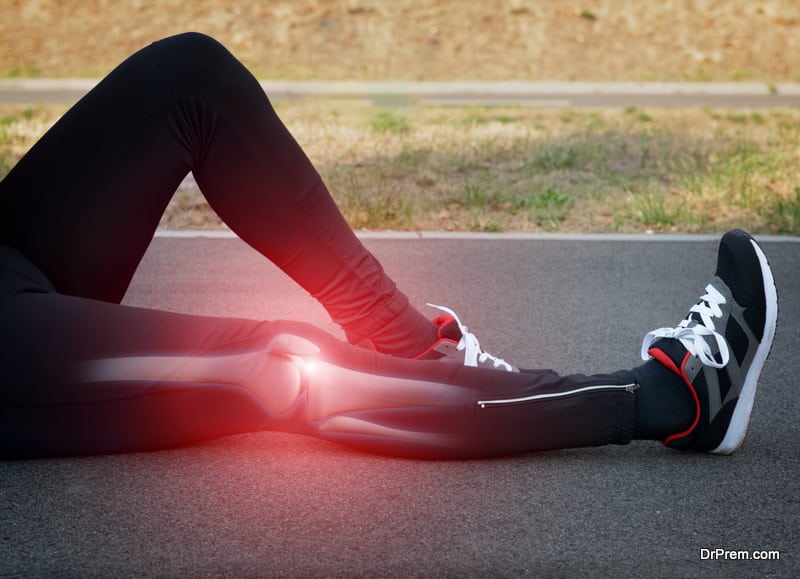Running is an extremely popular and beneficial form of exercise. Not only does it help tone your legs, back, and core, but it’s also great for your cardiovascular system. But running can also come with some risk of injury. Whether its road or trail running, hiking, or even running on the treadmill, there are some common runner’s injuries you should be aware of steps to take to prevent them.
Shin Splints

This is a common condition for new runners or those who have recently returned to running after a short hiatus. Shin splints are the common terminology used to describe this condition, which is actually caused by small tears in the muscles around your tibia or shin bone. Shin splints are also known as medial tibial stress syndrome. Runners will experience pain and discomfort in this area. If this occurs, it’s recommended that you take a short break from running, anywhere from a few days to a week. Shin splints are often caused by doing too much too soon. It’s also recommended that you ice and elevate your legs. Over the counter pain medications can also help ease your discomfort.
When it comes to preventative care, the best way to prevent shin splints is to increase your mileage gradually. It’s a safe bet to follow the 10 percent rule, which means increasing your runs by no more than 10 percent per week.
Iliotibial Band Syndrome (ITBS)
All lower extremities are at risk for injury when it comes to running. ITBS, or Iliotibial Band Syndrome affects a person’s IT band, which runs from the hip to the knee, on the outside of the thigh. During running, as your knee bends and flexes, it causes the IT band to rub against your femur. A certain amount of rubbing is normal, however, too much can cause discomfort and complications. ITBS is often the result of increasing your mileage too quickly. Downhill running can worsen this condition. If you feel discomfort in this area, it’s best to take a few days off from running. Foam rolling is a great therapy for ITBS and can help ease your pain. To avoid recurring injuries, avoid downhill routes and try switching up your course. Shortening your strides might actually help as well. Try landing midfoot or towards the front of your heel. This lessens IT band irritation.
Runner’s Knee

Runner’s knee, also known as patellofemoral pain syndrome (PFPS), occurs when the cartilage on the underside of your kneecap becomes irritated. Your knees can be extremely sensitive and running takes quite a toll on them. But not if you run with proper form. Be sure to land with your feet under your body rather than in front of you. Land with a slightly bent knee to avoid injury and allow your knee to absorb the impact. This also helps reduce the force placed on your joints. Your muscles, ligaments, and tendons will support your stride.
If you’re experiencing pain or discomfort in your knee, its best to take a rest day in between runs. Running uphill is sometimes a lower impact exercise, as well as running on a treadmill. You can prevent knee injuries by building up and strengthening your glute muscles. Strong quad muscles also help protect your knees. Strengthen these muscles through cycling. Lateral side steps are another great exercise for hip and glute flexibility and strength.
Achilles Tendonitis
Your Achilles tendon is a major tendon in your leg, connecting the calf muscle to the heel. Stress can cause this tendon to tighten, resulting in extreme discomfort. Individuals with weak calf muscles are susceptible to Achilles tendonitis. Runners who drastically and quickly increase their speed and the amount of uphill running they do are also at risk. Like with most running injuries, early detection and care is essential for a quick recovery. If you feel tightness in your Achilles, it’s recommended you stop running and take a few days off. Continuing to run through this condition will result in a major injury and put you out of the commission for upwards of 6 months or more. You can help ease an Achilles strain by icing the area several times a day. Strengthening your calf muscles can also help and may even prevent further issues. Wear supportive shoes, when you’re not running. High heels and flip flops can actually aggravate Achilles tendonitis.
Plantar Fasciitis

Your foot is made up of numerous tendons and ligaments that make it flexible and strong. It’s really no surprise that many runners suffer injuries to their feet. After all, your feet are what absorbs the force of your stride. In fact, the impact your feet encounter is often several times your body weight. Because of this, your foot is susceptible to injury and strain while running. Plantar fasciitis is a common condition and is the result of small tears or inflammation of the tendons and ligaments running from your heel to your toes. The pain and discomfort you feel is similar to what you might feel if you had a bruise. It’s a dull ache more than a sharp pain and is found along the arch of your foot or at the base of your heel. Because plantar fasciitis affects your ligaments, it’s often worse in the early morning hours, when your body hasn’t had the time to stretch.
Several factors can cause this condition, including:
- Individuals with very high or very low arches
- Excessive rolling of the foot outward or inward
- Long periods of time standing on hard surfaces
- Improper footwear
Other conditions can make the condition worse including lower back issues, weak core muscles, or tight hip flexor muscles.
There are ways to help ease the discomfort of plantar fasciitis and also prevent its onset. There are several different exercises for plantar fasciitis that can help stretch and massage the sore ligaments and tendons of the foot. Ensure that you’re wearing running shoes that offer enough support and strengthen your core muscles as often as possible. In severe case, runners may need to take a brief hiatus from running all together. This could last anywhere from three months to one year, however, most cases of plantar fasciitis subside around the 6 month mark.
Don’t Push It
The greatest piece of advice when addressing common running injuries is to listen to your body and rest before the condition worsens. We’re all guilty of working through the pain or ignoring it all together. Although you might make it through your current run, aggravating any of these conditions further could result in months of recovery. Strengthening other parts of your body including your core, calves, and glutes can also help protect your lower extremities while running and ensure you stay in the game.
Article Submitted By Community Writer




